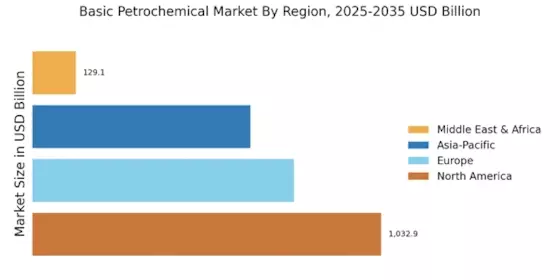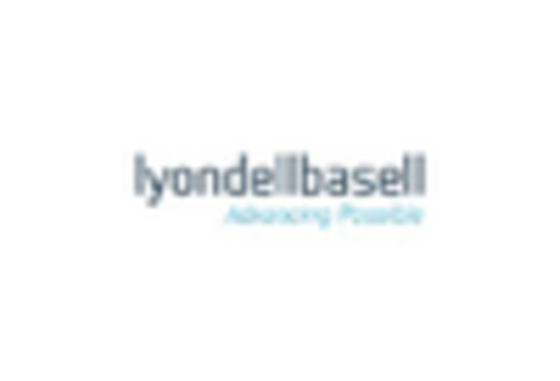Rising Demand for Plastics
The Basic Petrochemical Market is experiencing a notable surge in demand for plastics, driven by their extensive applications across various sectors. The packaging industry, in particular, is a significant contributor, as it accounts for approximately 40% of total plastic consumption. This trend is further fueled by the increasing preference for lightweight and durable materials in automotive and construction applications. As consumer awareness regarding sustainability grows, the industry is also witnessing a shift towards recyclable and biodegradable plastics. This evolving landscape suggests that the Basic Petrochemical Market will continue to expand, with projections indicating a compound annual growth rate of around 4% over the next five years. Such growth is likely to stimulate investments in production capacities and innovations in material science.
Shifts in Consumer Preferences
Consumer preferences are evolving, significantly impacting the Basic Petrochemical Market. There is a growing demand for sustainable and eco-friendly products, prompting manufacturers to rethink their offerings. This shift is evident in the increasing popularity of bioplastics and recycled materials, which are gaining traction among environmentally conscious consumers. Additionally, the rise of circular economy principles is influencing product design and lifecycle management, encouraging companies to develop solutions that minimize waste. As consumers become more informed about the environmental implications of their choices, the Basic Petrochemical Market is likely to experience a transformation in product development strategies. This trend may lead to increased investments in research and development, fostering innovation and sustainability within the sector.
Increasing Regulatory Pressures
The Basic Petrochemical Market is facing heightened regulatory pressures aimed at reducing environmental impacts and promoting sustainable practices. Governments worldwide are implementing stricter regulations concerning emissions, waste management, and chemical safety. These regulations compel companies to invest in cleaner technologies and adopt sustainable practices, which may initially increase operational costs. However, compliance with these regulations can lead to long-term benefits, including enhanced brand reputation and access to new markets. The industry's response to regulatory challenges is likely to drive innovation and efficiency, as companies seek to align their operations with evolving standards. This dynamic suggests that the Basic Petrochemical Market will continue to adapt, potentially leading to a more sustainable and responsible operational framework.
Innovations in Production Technologies
Technological advancements are playing a pivotal role in shaping the Basic Petrochemical Market. Innovations in production technologies, such as advanced catalytic processes and digitalization, are enhancing efficiency and reducing operational costs. For instance, the adoption of process intensification techniques is enabling manufacturers to achieve higher yields with lower energy consumption. Additionally, the implementation of Industry 4.0 principles, including automation and data analytics, is streamlining operations and improving decision-making processes. These advancements not only bolster productivity but also align with the industry's sustainability goals by minimizing waste and emissions. As a result, the Basic Petrochemical Market is likely to witness a transformation in its operational frameworks, fostering a more competitive and environmentally conscious landscape.
Energy Transition and Petrochemical Feedstocks
The Basic Petrochemical Market is currently influenced by the ongoing energy transition, which is reshaping the landscape of feedstock availability. As the world moves towards renewable energy sources, traditional fossil fuels are being scrutinized, leading to a potential shift in the sourcing of petrochemical feedstocks. Natural gas, particularly in the form of ethane, is becoming increasingly favored due to its lower carbon footprint compared to crude oil. This transition may result in a reconfiguration of supply chains within the Basic Petrochemical Market, as companies adapt to new feedstock dynamics. Furthermore, the integration of bio-based feedstocks is gaining traction, suggesting a diversification of raw material sources that could enhance sustainability and reduce environmental impact.


















Leave a Comment